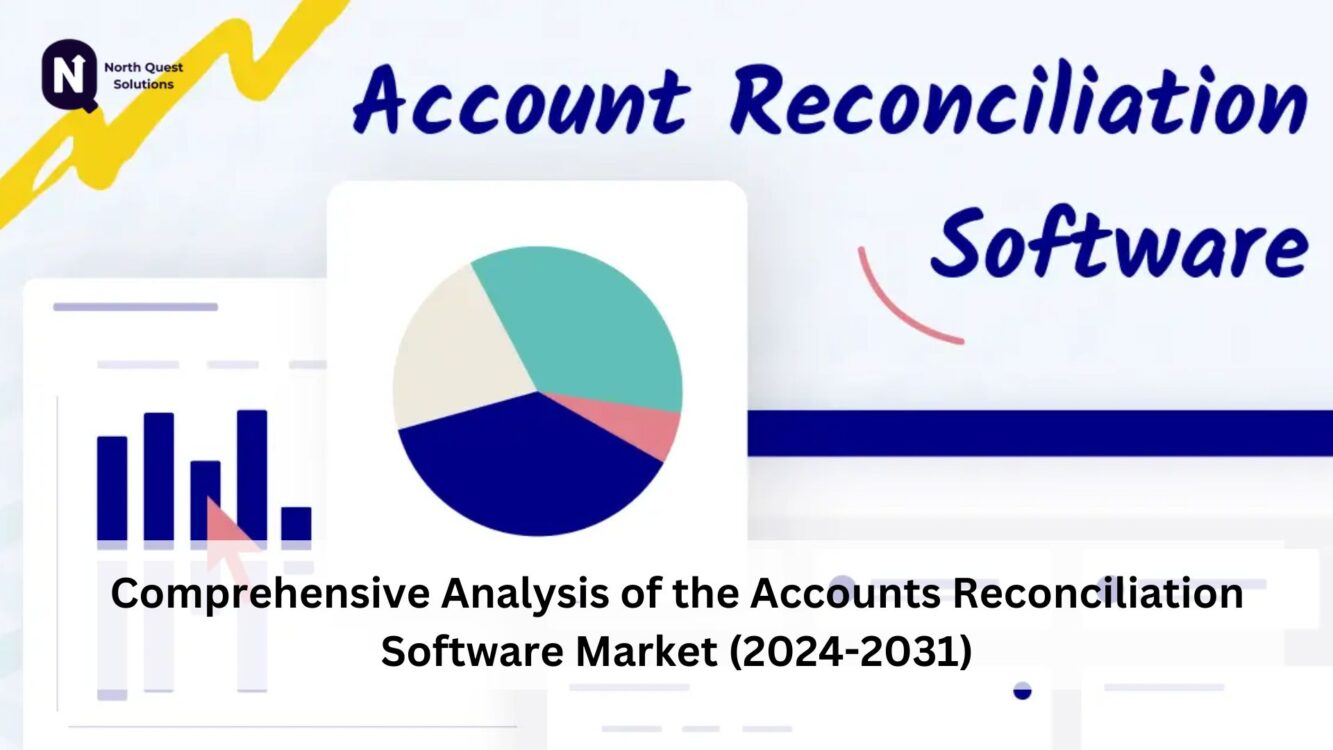
Account reconciliation is a crucial financial process that ensures the accuracy of a company’s financial records. This process involves comparing internal records with external statements to verify that all transactions align correctly. By performing regular account reconciliations, businesses can detect discrepancies, prevent fraud, and maintain financial integrity.
Why Account Reconciliation Matters
Maintaining precise financial records is essential for organizations of all sizes. Proper reconciliation prevents financial misstatements, ensures compliance with regulations, and provides a clear financial picture. It also helps in:
- Detecting errors: Identifying mistakes in entries, missing transactions, or misreported figures.
- Preventing fraud: Spotting unauthorized transactions or suspicious activities.
- Ensuring regulatory compliance: Adhering to financial reporting standards and tax requirements.
- Supporting decision-making: Providing accurate financial data for strategic planning.
Key Steps in the Account Reconciliation Process
1. Collect Relevant Documents
To start, gather all necessary financial records, including:
- Bank statements
- General ledger reports
- Vendor invoices
- Payroll records
- Receipts and sales reports
2. Compare Transactions
Cross-check internal records against external statements. Ensure each transaction recorded internally matches those on bank statements or other financial documents.
3. Identify Discrepancies
Look for any mismatches, including:
- Missing transactions that appear on one record but not the other.
- Duplicated entries that inflate expenses or revenues.
- Timing differences due to processing delays or cut-off periods.
4. Investigate and Resolve Differences
Once discrepancies are identified, investigate their causes. This may involve:
- Contacting banks or vendors for clarification.
- Adjusting journal entries.
- Documenting corrections with proper justification.
5. Update Records and Finalize Reconciliation
Make necessary adjustments in the accounting system and ensure final figures align. Document the reconciliation process for audit and compliance purposes.
Types of Account Reconciliations
1. Bank Reconciliation
One of the most common types, bank reconciliation ensures that bank statements match the company’s cash accounts. This process helps identify unauthorized transactions, outstanding checks, and bank errors.
2. Vendor Reconciliation
Vendor reconciliation compares a company’s accounts payable records with statements from suppliers. This ensures that all invoices are accounted for and paid correctly.
3. Customer Reconciliation
Customer reconciliation involves matching accounts receivable records with payments received from customers. This helps track overdue balances and prevent revenue loss.
4. Credit Card Reconciliation
For businesses that rely on credit transactions, credit card reconciliation ensures that credit card statements match recorded expenses. This helps in detecting fraudulent charges and unrecorded transactions.
5. Intercompany Reconciliation
Large corporations with multiple subsidiaries perform intercompany reconciliations to verify internal transactions between different divisions.
6. Payroll Reconciliation
Payroll reconciliation ensures that salary payments align with payroll records, tax deductions, and employee benefits.
Best Practices for Effective Account Reconciliation
1. Establish a Regular Schedule
Reconcile accounts on a monthly or quarterly basis to maintain accuracy and detect issues early.
2. Automate the Process
Utilize accounting software and reconciliation tools to streamline the process, reduce errors, and save time.
3. Maintain Proper Documentation
Ensure all reconciliations are documented with supporting records. This practice facilitates audits and improves financial transparency.
4. Segregate Duties
Assign different individuals to record transactions and reconcile accounts to minimize the risk of fraud.
5. Investigate Variances Promptly
Address any discrepancies immediately to prevent financial misstatements from accumulating over time.
Common Challenges in Account Reconciliation
1. Data Entry Errors
Mistakes in manual entries can lead to mismatches. Automated reconciliation software can significantly reduce such errors.
2. Timing Differences
Certain transactions, such as bank deposits in transit or uncashed checks, may cause temporary discrepancies. Proper documentation helps in tracking these differences.
3. Fraudulent Activities
Unauthorized transactions or internal fraud can distort financial records. Regular reconciliations help in early detection.
4. High Transaction Volumes
Large organizations with numerous transactions may find manual reconciliation cumbersome. Implementing reconciliation software simplifies this process.
The Role of Technology in Account Reconciliation
Modern account reconciliation software automates much of the process, offering:
- Real-time transaction matching to identify discrepancies instantly.
- Artificial intelligence (AI)-powered analytics to detect patterns and anomalies.
- Audit trails to ensure compliance and accuracy.
Popular reconciliation software includes BlackLine, Trintech, and QuickBooks, which help businesses streamline financial operations.
Final Thoughts
Account reconciliation is an essential practice for businesses to maintain accurate financial records, detect fraud, and comply with financial regulations. By implementing best practices and leveraging technology, companies can streamline the reconciliation process, reduce errors, and ensure financial stability.
Faq’s
1. What are the key steps involved in the account reconciliation process?
The account reconciliation process typically includes the following steps:
- Gather financial records: Collect bank statements, ledger entries, and supporting documents.
- Compare balances: Match ledger balances with external records (e.g., bank statements).
- Identify discrepancies: Spot any differences between records and investigate the cause.
- Adjust entries: Make necessary corrections, such as recording missing transactions.
- Confirm accuracy: Ensure all transactions are accounted for and reconcile any outstanding items.
- Document the process: Maintain a record of reconciliations for audits and compliance.
2. Why is account reconciliation important for financial accuracy and compliance?
Account reconciliation ensures financial integrity by:
- Identifying and correcting errors or fraudulent transactions.
- Maintaining compliance with accounting standards and regulations.
- Preventing financial misstatements and ensuring accurate financial reporting.
- Supporting better financial decision-making with reliable data.
- Strengthening internal controls to prevent mismanagement of funds.
3. What are the most common challenges businesses face during account reconciliation?
Some key challenges include:
- Manual errors: Human mistakes in data entry can lead to discrepancies.
- Missing or duplicate transactions: Unrecorded or duplicated entries create reconciliation difficulties.
- Time-consuming process: Manual reconciliation takes significant effort and resources.
- Bank delays: Timing differences between recorded transactions and bank processing can cause mismatches.
- Data integration issues: Difficulty syncing accounting software with bank feeds and financial records.
4. How can automation improve the efficiency of the account reconciliation process?
Automation enhances reconciliation by:
- Reducing errors: AI-powered tools minimize human mistakes.
- Saving time: Automated matching of transactions accelerates reconciliation.
- Enhancing accuracy: Real-time data synchronization ensures up-to-date financial records.
- Improving compliance: Automated audit trails help businesses meet regulatory standards.
- Increasing scalability: Businesses can handle higher transaction volumes without extra workload.
5. What are the best practices for reconciling accounts in small and large businesses?
Best practices include:
- Regular reconciliation: Perform reconciliations weekly, monthly, or as needed to prevent backlogs.
- Use automation tools: Implement reconciliation software to streamline processes.
- Ensure proper documentation: Keep detailed records for audits and financial accuracy.
- Segregate duties: Assign different team members to record transactions and perform reconciliations.
- Investigate discrepancies immediately: Address any mismatches promptly to prevent financial errors.
6. How often should account reconciliation be performed for optimal financial management?
The frequency depends on business needs:
- Daily reconciliation: Ideal for high-volume businesses, such as retail or banking.
- Weekly reconciliation: Recommended for mid-sized businesses with moderate transaction volumes.
- Monthly reconciliation: Standard practice for most companies to align financial reports.
- Quarterly or annual reconciliation: Used for long-term financial reporting and audits.
7. What tools or software solutions are available for streamlining account reconciliation?
Popular reconciliation tools include:
- QuickBooks: Widely used for small to mid-sized businesses.
- Xero: Cloud-based accounting software with built-in reconciliation features.
- BlackLine: Advanced reconciliation tool for enterprises.
- ReconArt: Provides automation for high-volume reconciliations.
- SAP Account Reconciliation: Suitable for large corporations needing integration with ERP systems.
8. How can discrepancies be identified and resolved effectively during reconciliation?
- Check for timing differences: Some transactions may appear in the ledger before they are processed by the bank.
- Look for data entry errors: Ensure amounts and dates match between records.
- Verify missing transactions: Identify unrecorded payments, deposits, or withdrawals.
- Investigate duplicate transactions: Remove any double entries that may cause discrepancies.
- Adjust records: Make necessary journal entries to correct mistakes and balance accounts.
9. What are the regulatory requirements related to account reconciliation in different industries?
Regulatory requirements vary by industry and region, but common ones include:
- SOX (Sarbanes-Oxley Act) – USA: Requires accurate financial reporting for public companies.
- IFRS (International Financial Reporting Standards): Global standards for financial accuracy.
- GAAP (Generally Accepted Accounting Principles) – USA: Compliance for proper accounting practices.
- Basel III – Banking Industry: Ensures financial stability and accurate risk assessment.
- HIPAA (Healthcare Industry): Requires secure financial and billing recordkeeping.
10. How does account reconciliation impact financial reporting and decision-making?
- Enhances financial transparency: Provides a clear view of business finances.
- Improves decision-making: Accurate records help in budgeting and forecasting.
- Reduces financial risks: Identifies fraudulent transactions and accounting errors.
- Supports compliance: Helps businesses meet legal and regulatory requirements.
- Strengthens investor confidence: Reliable financial statements boost trust among stakeholders.
